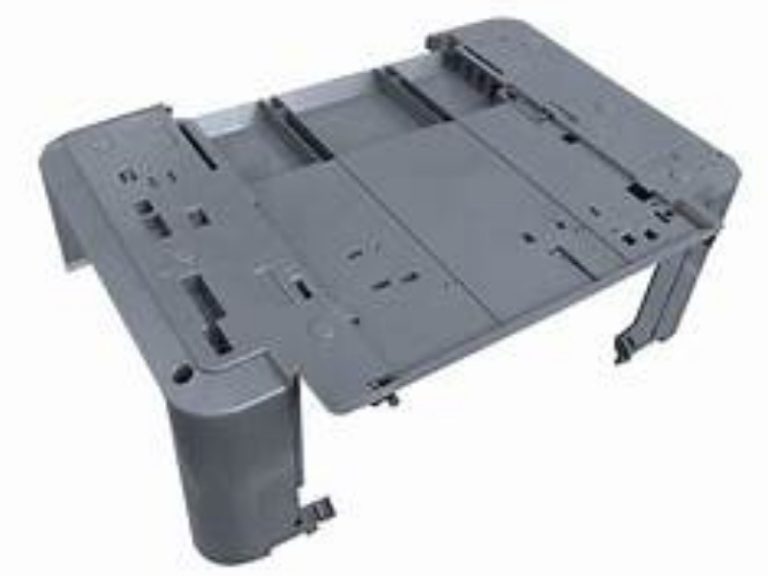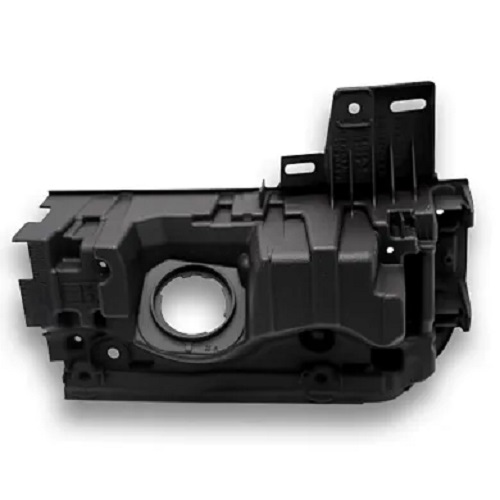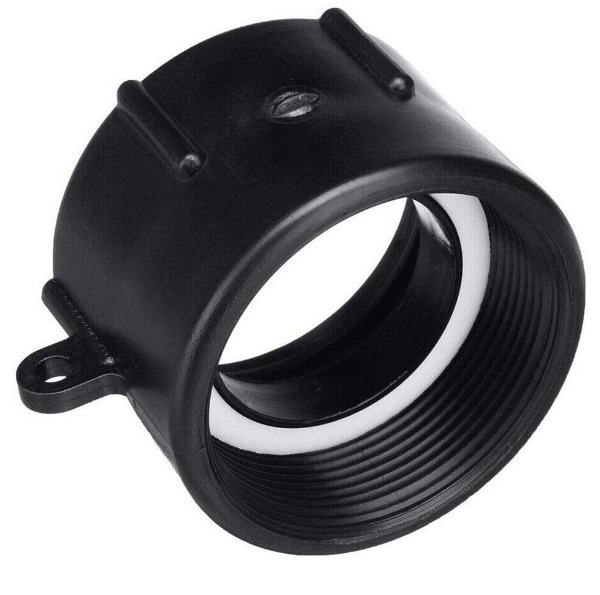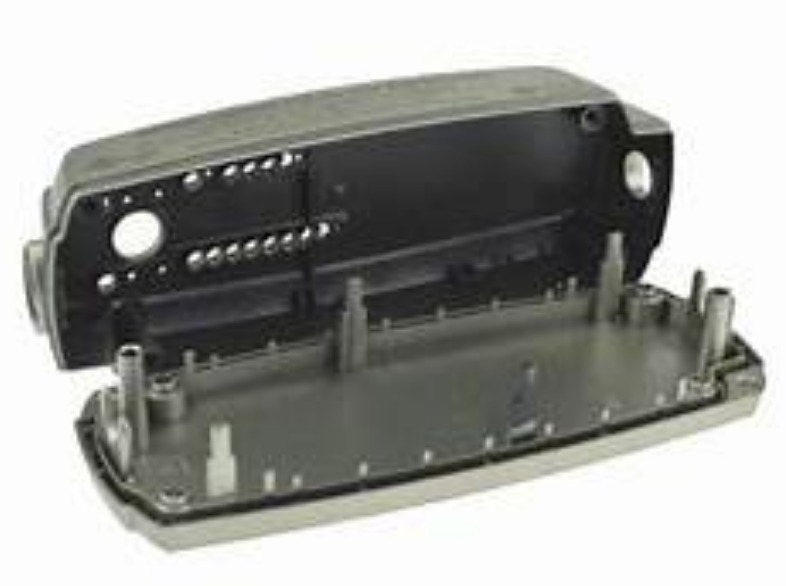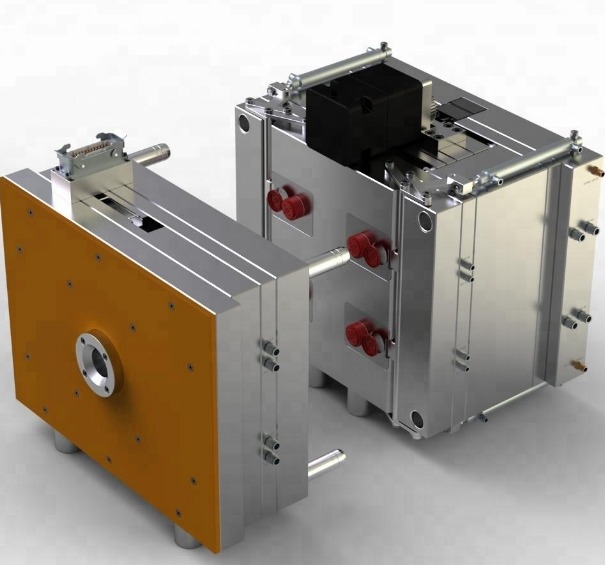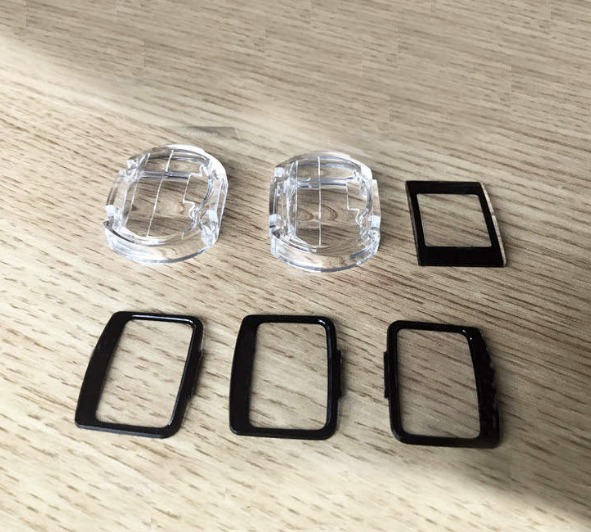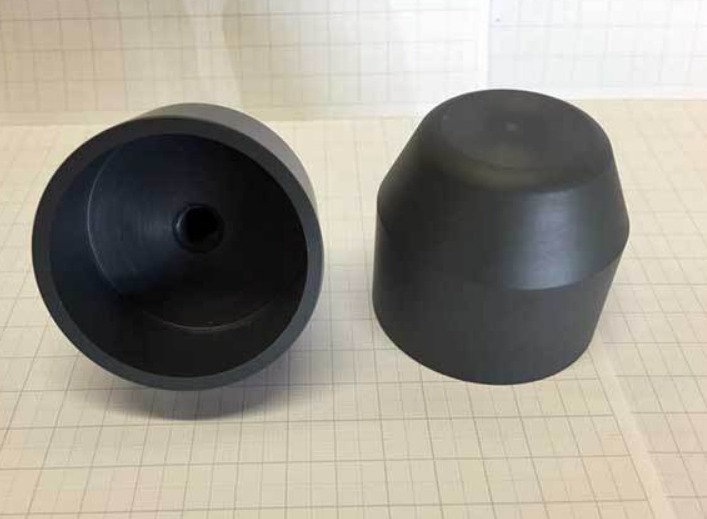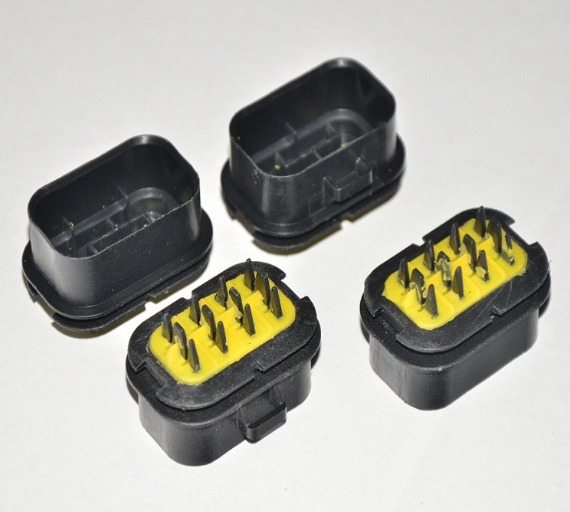What is Double Shot Injection Molding
Double Shot Injection Molding, also known as two-shot or multi-shot injection molding, is an advanced manufacturing process that allows for the creation of complex plastic parts with multiple materials or colors in a single operation. This innovative technique has gained significant popularity across various industries due to its ability to produce high - quality, intricate components efficiently.
The Basic Process
At its core, the double shot injection molding process involves two distinct injection steps. In the first step, the primary material is injected into a mold cavity, where it cools and solidifies to form the base structure of the part. Once the first material has set, the mold rotates or shifts, and a second material is injected into the same or an adjacent cavity. This second material bonds with the first, creating a single, unified part with a combination of materials.
For example, in the production of a computer mouse, the first shot might be a hard plastic for the main body structure, providing strength and durability. The second shot could then be a soft, rubber - like material for the grip areas, enhancing user comfort and providing a better tactile experience.
Key Components and Machinery
- Injection Molding Machines: Specialized double shot injection molding machines are required for this process. These machines are equipped with multiple injection units, each capable of handling different materials. The machine controls the precise timing, pressure, and volume of each injection, ensuring accurate and consistent results.
- Molds: Custom - designed molds are crucial for double shot injection molding. The molds are typically more complex than those used in traditional injection molding, as they need to accommodate the two - step injection process. They often have movable components, such as slides or rotating cores, to facilitate the injection of the second material and ensure proper alignment of the two shots.
The Process Step - by - Step
Material Selection
The choice of materials in double shot injection molding is crucial as it directly impacts the final product's properties. Commonly used materials include ABS (Acrylonitrile Butadiene Styrene), PP (Polypropylene), PC (Polycarbonate), TPU (Thermoplastic Polyurethane), and TPE (Thermoplastic Elastomer).
- ABS: It is widely used for its excellent mechanical properties, high impact resistance, and good dimensional stability. ABS is often chosen for the first shot when a strong structural base is required, such as in electronic device housings. For example, in the production of a power tool body, ABS provides the necessary strength and durability to withstand the rigors of use.
- PP: Known for its low cost, good chemical resistance, and high heat resistance, PP is a popular choice, especially for products that need to be chemically resistant, like some automotive interior components. It can also be used in combination with other materials to reduce costs while maintaining certain performance requirements.
- PC: PC offers high strength, transparency, and heat resistance. It is often used in applications where optical clarity or high - temperature resistance is needed. In the production of lighting fixtures, PC can be used for the first shot to form the main body, providing strength and heat resistance, while a soft TPU can be used for the second shot to create a comfortable grip area.
- TPU and TPE: These are soft, flexible materials. They are typically used for the second shot to add features like soft grips, shock absorption, or waterproof seals. For instance, in the manufacturing of a mobile phone case, a hard PC can be the first - shot material for the main structure, and TPU can be the second - shot material for the edges to provide a better grip and shock - absorbing capabilities.
The selection of materials depends on factors such as the product's end - use requirements, the compatibility of the materials (both in terms of adhesion and processing temperatures), and cost considerations.
Mold Preparation
Mold design is a critical aspect of double shot injection molding. The mold must be carefully designed to accommodate the two - step injection process.
- Complex Structure: Double shot molds are more complex than single - shot molds. They often have movable components, such as slides or rotating cores. For example, in a mold for producing a two - part plastic component with a snap - fit feature, the mold may have slides that move to create the snap - fit geometry during the second injection.
- Accommodating Two Shots: The mold needs to be designed to ensure proper alignment of the two shots. This involves creating precise cavities and channels for each material. The first - shot cavity is designed to form the base structure, and the second - shot cavity is designed to bond with the first - shot part. The mold also needs to have a mechanism to move the partially - formed part from the first - shot cavity to the second - shot cavity, which could be a rotating plate or a sliding mechanism.
- Cooling System: An efficient cooling system is essential in the mold to ensure rapid and even cooling of the injected plastics. This helps to reduce cycle times and improve the quality of the final product. For example, cooling channels are strategically placed in the mold to quickly cool the hot plastic, preventing warping and ensuring dimensional accuracy.
First Injection
The first injection is the foundation of the double shot injection molding process.
- Plastic Heating: The selected plastic material is fed into the injection unit of the molding machine. Here, it is heated to its melting point. For example, if ABS is used, it is typically heated to around 200 - 250°C. The heating process softens the plastic, making it fluid enough to be injected into the mold.
- Injection into the Mold Cavity: Once the plastic is molten, it is forced into the first - shot cavity of the mold under high pressure. The injection pressure can range from 50 - 200 MPa, depending on the material and the complexity of the mold. This pressure ensures that the plastic fills every detail of the cavity, taking on the shape of the first - part of the final product.
- Cooling and Solidification: After the cavity is filled, the plastic is allowed to cool. Cooling is facilitated by the mold's cooling system, which circulates a coolant (usually water) through the mold. As the plastic cools, it solidifies, forming the first - shot part. The cooling time can vary from a few seconds to several minutes, depending on the size and thickness of the part.
Second Injection
The second injection builds on the first - shot part and creates the final, multi - material product.
- Differences from the First Injection: The second injection uses a different material, which may have different melting points, viscosities, and processing requirements. For example, if the first shot is a hard plastic like PC and the second shot is a soft TPU, the TPU will have a lower melting point and a different injection pressure requirement.
- Bonding the Two Materials: To ensure a strong bond between the two materials, the mold design and the injection process are carefully controlled. The second - shot material is injected in such a way that it flows around and adheres to the first - shot part. This can be enhanced by creating surface features on the first - shot part, such as grooves or rough surfaces, to improve adhesion. Additionally, the timing of the second injection is crucial. It should be done while the first - shot part is still slightly warm, which helps the two materials bond better. The second - shot material fills its designated cavity, surrounding or joining with the first - shot part, and after cooling and solidification, a single, integrated product with two different materials is formed.
Comparison with Other Molding Processes
When considering manufacturing processes for plastic parts, it's crucial to understand how double shot injection molding compares to other common techniques. Here, we'll look at single shot injection molding and gas - assisted injection molding.
Single Shot Injection Molding
Single shot injection molding is the most basic form of injection molding, where only one material is injected into the mold cavity in a single operation.
| Feature | Double Shot Injection Molding | Single Shot Injection Molding |
| Material Complexity | Can use two or more different materials in one part, allowing for a combination of properties like a hard outer shell and a soft inner layer. | Only one material can be used per part, limiting the range of properties to those of a single material. |
| Color Options | Multiple colors can be incorporated into a single part, which is great for creating visually appealing products with built - in color patterns. | Only one color can be used per part. If multiple colors are required, additional post - molding processes like painting or labeling are needed. |
| Part Complexity | Ideal for creating complex parts with integrated features such as soft - touch grips, snap - fits, or multi - material joints. | Best suited for simpler parts. Adding complex features may require multiple parts and assembly processes. |
| Cost per Unit (for high - volume production) | Initially, the tooling cost is higher due to the more complex mold design. However, for high - volume production, the cost per unit can be competitive as it reduces the need for assembly of multiple parts. | Tooling cost is generally lower. But if complex parts require multiple components to be assembled, the overall cost per unit may increase due to assembly labor and additional parts. |
Gas - Assisted Injection Molding
Gas - assisted injection molding uses gas (usually nitrogen) to help fill the mold cavity and provide uniform pressure during the molding process, often creating hollow or semi - hollow parts.
| Feature | Double Shot Injection Molding | Gas - Assisted Injection Molding |
| Part Structure | Creates parts with distinct material layers or combinations, such as a rigid outer layer and a flexible inner layer. | Focuses on creating hollow or semi - hollow structures within a single - material part, which can reduce weight and material usage. |
| Application Focus | Suited for products where different material properties need to be combined in one part, like consumer electronics with soft - touch surfaces. | Mainly used for products that require lightweighting, such as large automotive components or furniture parts. |
| Mold Design Complexity | Molds are complex due to the need to handle two different materials and ensure proper alignment and bonding. | Molds are complex in a different way, with the need to incorporate gas channels and control the gas injection process accurately. |
| Surface Finish | Can achieve a smooth surface finish on both materials, but any visible bond lines between the two materials need to be carefully managed. | May have small marks or indentations at the gas inlet points, which can be a concern for products with high - end surface finish requirements. |
Yigu Technology's View
As a non - standard plastic metal products custom supplier, Yigu Technology highly values the Double Shot Injection Molding process. This process offers significant advantages in enhancing product quality and production efficiency. By integrating multiple materials in one operation, it allows for the creation of products with enhanced functionality, such as combining a hard, durable outer layer with a soft, comfortable inner layer.
With years of experience in the field, Yigu Technology has mastered the technical nuances of double shot injection molding. Our team of experts is proficient in material selection, mold design, and process optimization. We have successfully applied this technology in various projects, from consumer electronics to automotive components, delivering high - quality products that meet and exceed customer expectations. Our advanced manufacturing facilities and strict quality control systems ensure that every double - shot - molded product leaving our factory is of the highest standard, reflecting our commitment to innovation and excellence in the manufacturing industry.
FAQs
What types of products are suitable for double shot injection molding?
Double shot injection molding is suitable for a wide range of products. In the automotive industry, it is used for manufacturing interior components like steering wheels (combining a hard plastic core with a soft, grippy outer layer) and gear shift knobs. In the electronics sector, it is ideal for making smartphone cases with a hard protective shell and a soft inner lining for shock absorption, as well as computer keyboards with keycaps made of two different materials for better tactile feedback. Toys often benefit from this process, with parts that have both rigid and flexible elements for enhanced playability and durability. Additionally, products like toothbrushes, where the handle is made of a hard plastic and the bristles - holding part is a different, more wear - resistant material, are well - suited for double shot injection molding.
How to ensure the quality of double shot injection molding products?
To ensure high - quality double shot injection molding products, several key steps must be taken. First, strict material quality control is essential. Thoroughly test the materials before use to ensure they meet the required specifications in terms of physical properties, such as melt flow index, tensile strength, and adhesion properties. Second, optimize the injection parameters. This includes carefully adjusting the injection pressure, temperature, and speed for each material. For example, the injection pressure for the first shot might be higher to ensure complete filling of the complex mold cavities, while the second - shot pressure may need to be adjusted to ensure good bonding without deforming the first - shot part. Regularly maintain and calibrate the injection molding machines and molds. Inspect the molds for wear and tear, and clean them regularly to prevent contaminants from affecting the product quality. Conduct in - process quality checks, such as measuring the dimensions of the partially - formed parts during each injection step and performing visual inspections for any defects like voids, warping, or poor adhesion.
Is double shot injection molding more expensive than single shot injection molding?
The cost comparison between double shot injection molding and single shot injection molding depends on various factors. In terms of tooling, double shot injection molding generally has a higher initial cost because the molds are more complex, with additional components for handling two materials and ensuring proper alignment. However, for high - volume production, the cost per unit can be competitive. Since double shot injection molding can create a more complex part in one operation, it may eliminate the need for secondary operations or assembly of multiple parts, saving labor and production time. For example, if a product requires two parts to be assembled in a single shot injection molding process, the cost of assembly labor and the additional handling time add to the overall cost. In contrast, a double shot injection molding process can produce the integrated part directly, potentially reducing costs in the long run. For small - volume production, single shot injection molding may be more cost - effective due to its lower initial tooling cost, as the high tooling cost of double shot injection molding may not be offset by the savings in production steps when the quantity is low.
